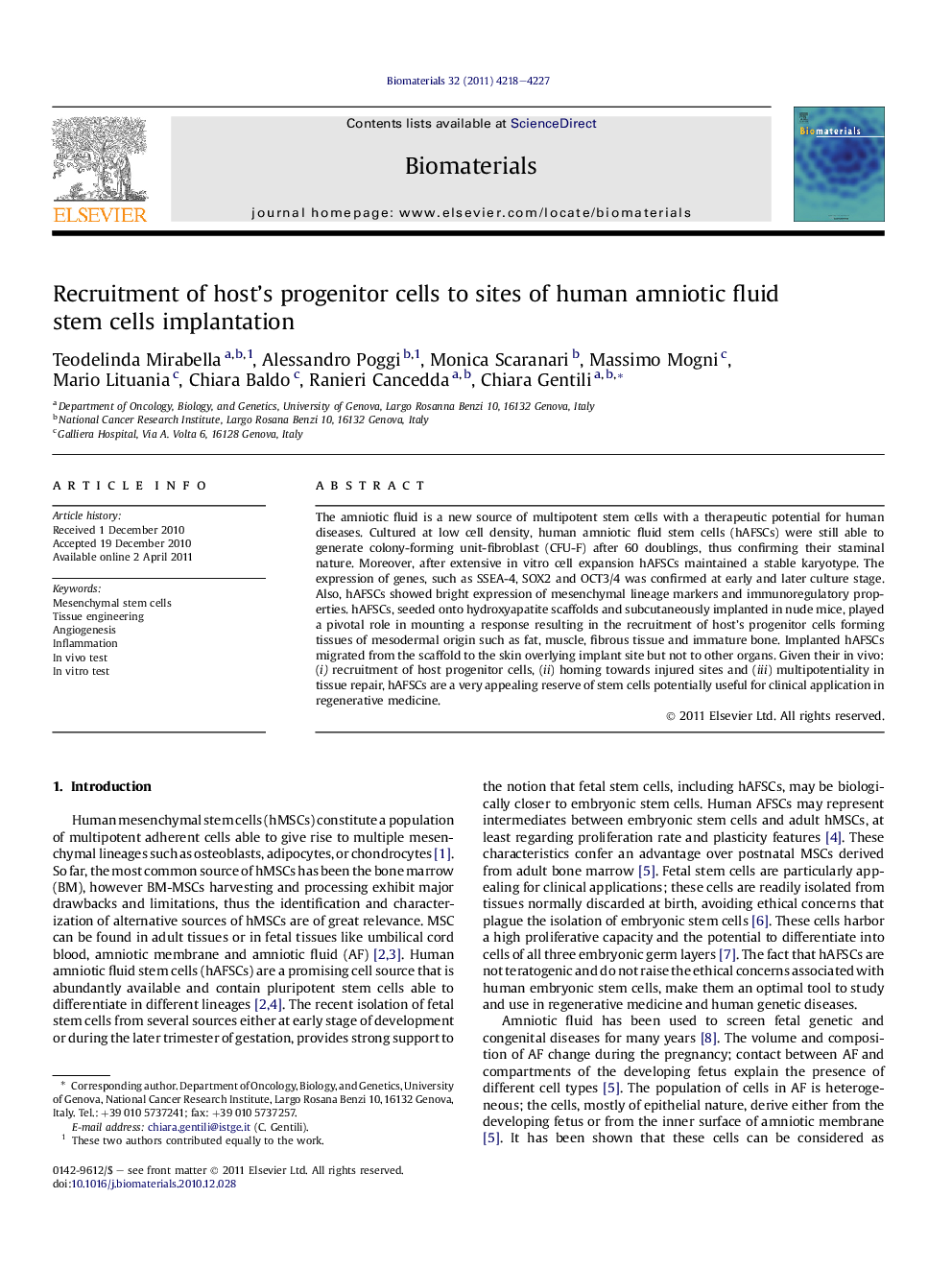| Article ID | Journal | Published Year | Pages | File Type |
|---|---|---|---|---|
| 7528 | Biomaterials | 2011 | 10 Pages |
The amniotic fluid is a new source of multipotent stem cells with a therapeutic potential for human diseases. Cultured at low cell density, human amniotic fluid stem cells (hAFSCs) were still able to generate colony-forming unit-fibroblast (CFU-F) after 60 doublings, thus confirming their staminal nature. Moreover, after extensive in vitro cell expansion hAFSCs maintained a stable karyotype. The expression of genes, such as SSEA-4, SOX2 and OCT3/4 was confirmed at early and later culture stage. Also, hAFSCs showed bright expression of mesenchymal lineage markers and immunoregulatory properties. hAFSCs, seeded onto hydroxyapatite scaffolds and subcutaneously implanted in nude mice, played a pivotal role in mounting a response resulting in the recruitment of host’s progenitor cells forming tissues of mesodermal origin such as fat, muscle, fibrous tissue and immature bone. Implanted hAFSCs migrated from the scaffold to the skin overlying implant site but not to other organs. Given their in vivo: (i) recruitment of host progenitor cells, (ii) homing towards injured sites and (iii) multipotentiality in tissue repair, hAFSCs are a very appealing reserve of stem cells potentially useful for clinical application in regenerative medicine.
